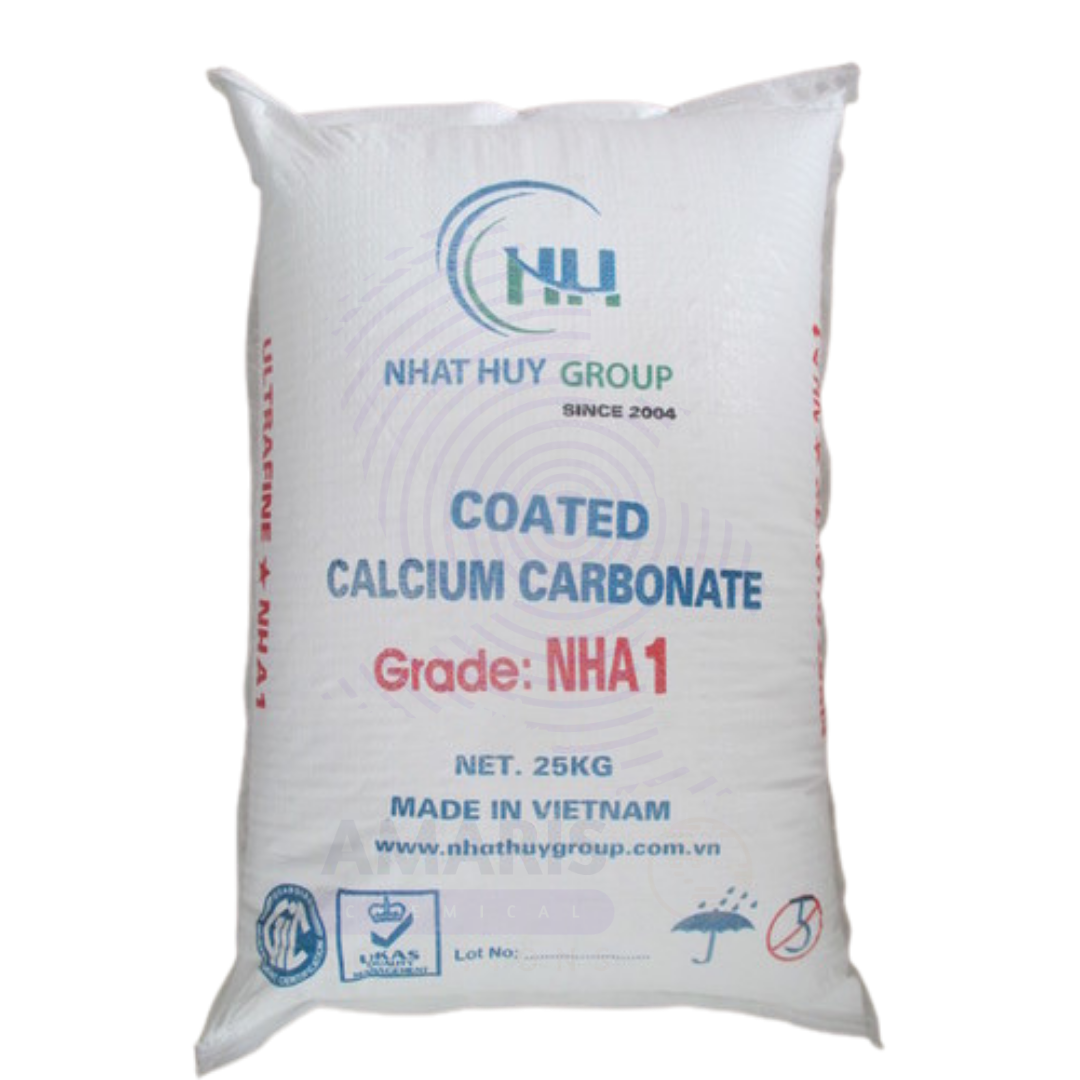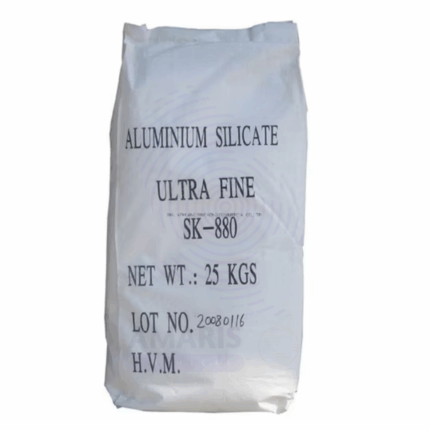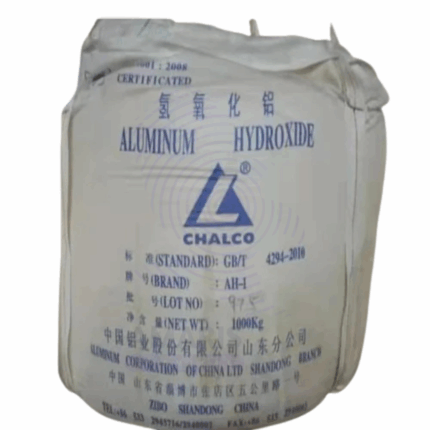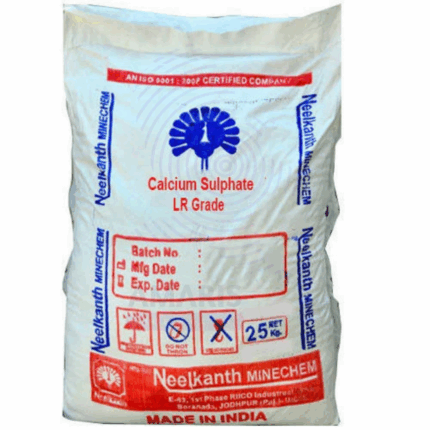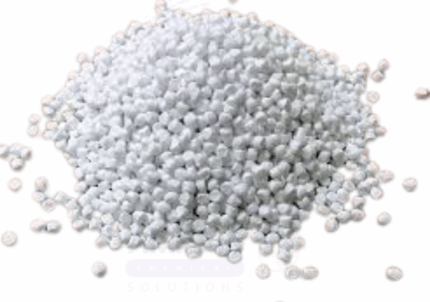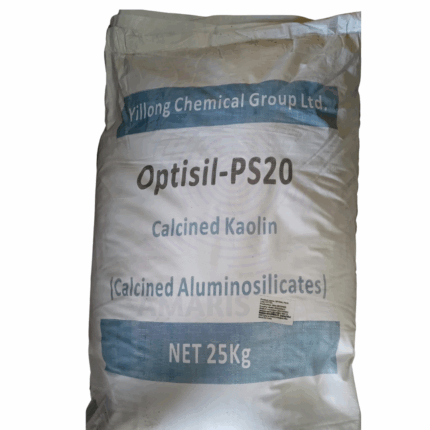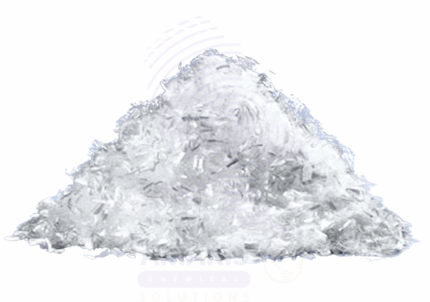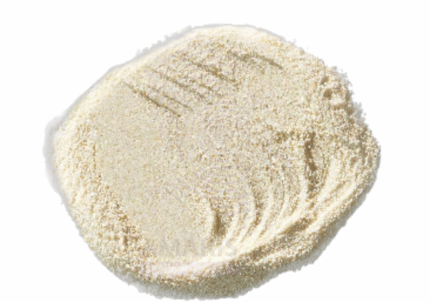Coated Calcium Carbonate
Whatsapp Order
Coated Calcium Carbonate is a fine, white, odorless powder consisting of naturally occurring ground calcium carbonate (CaCO₃) treated with a surface coating—typically stearic acid or other fatty acids—to enhance compatibility with non-polar matrices. This coating improves dispersion in plastic and rubber formulations, reduces moisture pickup, and enhances the physical properties of the final product. Compared to uncoated grades, coated calcium carbonate offers better hydrophobicity, improved flow properties, and stronger interfacial bonding in polymeric systems. It is widely used in plastics, rubber, paints, sealants, adhesives, paper, and more.
Description
Table of Contents
Toggle
Coated Calcium Carbonate
Primary Uses
- Plastics Industry
- Used as a functional filler in polypropylene (PP), polyethylene (PE), PVC, and thermoplastics.
- Improves dimensional stability, rigidity, and impact strength.
- Enhances dispersion and reduces compound viscosity.
- The stearic acid coating increases compatibility with polyolefins and reduces water absorption.
- Reduces material cost while maintaining mechanical performance.
- Rubber Industry
- Acts as a reinforcing agent and processing aid in natural and synthetic rubber.
- Improves tensile strength, elasticity, and abrasion resistance.
- Enhances surface finish and reduces curing time.
- Prevents moisture absorption, improving product shelf-life and consistency.
- Paints & Coatings
- Used as an extender pigment in architectural and industrial paints.
- Provides matting, opacity, and rheological control.
- Reduces oil absorption and improves weather resistance in exterior coatings.
- In powder coatings, it helps improve flow properties and electrostatic spray behavior.
- Adhesives & Sealants
- Used to modify rheology and reduce cost.
- Improves consistency, thixotropy, and bonding strength.
- Prevents cracking and enhances thermal resistance.
Secondary Uses
- Cable & Wire Compounding
- Filler in sheathing and insulation materials.
- Enhances dielectric strength, flame resistance, and processability.
- Coated version provides better moisture resistance.
- Paper Industry (Limited Use)
- Used in specialty papers requiring enhanced smoothness and printability.
- Coated calcium carbonate can be employed where improved water resistance is needed.
- Masterbatch & Compounding
- Used in color and additive masterbatches to ensure uniform dispersion of pigments and fillers.
- Aids in maintaining pellet strength and batch consistency.
- Construction Materials
- Incorporated into dry mix mortars and sealants to enhance flowability and durability.
- Contributes to crack resistance and improved surface smoothness.
- Inks
- Used in some ink systems for its opacity and matting properties while maintaining low viscosity.
KEY PRODUCT FEATURES
1. Basic Identification Attributes
- Chemical Name (IUPAC): Calcium Carbonate
- Common/Trade Name: Coated Calcium Carbonate
- CAS Number: 471-34-1
- HS Code: 2836.50.00
- Molecular Formula: CaCO₃
- Synonyms:
- Surface-treated calcium carbonate
- Stearic acid coated CaCO₃
- Modified calcium carbonate
2. Physical & Chemical Properties
- Physical State: Fine powder
- Color & Odor: White; odorless
- Particle Size (D50): Typically 1–5 microns (varies by grade)
- Surface Treatment: Stearic acid (typically 1–2% by weight)
- Density: ~2.7 g/cm³
- Oil Absorption: Lower than uncoated grades
- Moisture Content: <0.5%
- pH (10% slurry): 8.5–9.5
- Solubility: Insoluble in water; reacts with acids to release CO₂
- Stability: Chemically stable under normal conditions
3. Safety & Hazard Attributes
- Hazard Class (GHS): Not classified as hazardous
- NFPA Ratings:
- Health: 1
- Flammability: 1
- Reactivity: 0
- Exposure Limits:
- OSHA PEL: 15 mg/m³ (total dust)
- ACGIH TLV: 10 mg/m³
- Toxicity: Non-toxic; may cause mild irritation if inhaled as dust
- Reactivity: Inert; reacts with strong acids to release carbon dioxide
4. Storage & Handling Attributes
- Storage Conditions: Store in a cool, dry place away from moisture
- Container Type: Multi-layer paper or HDPE bags, or bulk containers
- Shelf Life: Indefinite if stored properly
- Special Handling:
- Use dust extraction during bulk handling
- Avoid breathing dust
- Store away from acids
5. Regulatory & Compliance Attributes
- FDA Status: Indirect food additive (restricted uses)
- REACH Status: Registered
- RoHS/ELV: Compliant
- Transportation: Not regulated as hazardous material
- Waste Disposal: Dispose according to local regulations; environmentally safe
6. Environmental & Health Impact
- Ecotoxicity: Non-toxic to aquatic and terrestrial life
- Persistence: Stable and non-reactive in the environment
- Bioaccumulation: Does not bioaccumulate
- Carcinogenicity/Mutagenicity: Not classified as carcinogenic
- Biodegradability: Not biodegradable but environmentally inert
SAFETY HANDLING PRECAUTIONS
Safety Handling Precautions
PPE Requirements:
- Dust mask or respirator
- Safety goggles
- Gloves and protective clothing if prolonged exposure
Handling Measures:
- Avoid creating dust clouds
- Use adequate ventilation
- Avoid contact with eyes and prolonged inhalation of dust
Storage Guidelines:
- Keep containers tightly sealed
- Store away from moisture and strong acids
- Use first-in, first-out inventory rotation
Hygiene Practices:
- Wash hands after handling
- Avoid eating, drinking, or smoking in handling areas
First Aid Measures
- Inhalation: Move to fresh air; seek medical attention if symptoms persist
- Skin Contact: Wash with soap and water
- Eye Contact: Rinse immediately with water for 15 minutes; seek medical advice if irritation continues
- Ingestion: Rinse mouth; not considered toxic, but seek medical advice for large amounts
Firefighting Measures
- Fire Hazards: Non-flammable
- Extinguishing Media: Use media suitable for surrounding fire
- Special Precautions: Avoid dust accumulation in fire-prone areas
- Decomposition Products: None under normal fire conditions
Related products
Aluminium Silicate
Aluminium silicate is an inorganic compound composed of aluminum, silicon, and oxygen, often found naturally as a major component of clay minerals such as kaolinite, halloysite, and other aluminosilicates. It is a white to off-white powder with excellent thermal stability, chemical inertness, and physical durability. Due to its wide range of physicochemical properties—including high melting point, non-toxicity, and adsorptive capabilities—aluminium silicate is extensively used across diverse industries including ceramics, paints, paper, rubber, plastics, cosmetics, and pharmaceuticals. Its unique structure imparts benefits such as heat resistance, improved mechanical strength, and anti-caking properties, making it a vital raw material in both industrial and consumer products.
Aluminum hydroxide
Aluminum Hydroxide, chemically known as Al(OH)₃, is a white, odorless, and odorless powder or gelatinous substance. It is widely used in pharmaceuticals as an antacid to neutralize stomach acid and relieve indigestion and heartburn. Beyond healthcare, aluminum hydroxide is a crucial component in water purification, fire retardants, and as a precursor or filler in various industrial applications. It functions as a flame retardant by releasing water upon heating, thus cooling the material and diluting flammable gases. Due to its amphoteric nature, it can react both as an acid and base, enhancing its versatility. Aluminum hydroxide is often utilized in manufacturing aluminum salts and in producing aluminum oxide.
Calcium Sulphate
Calcium Sulphate is an inorganic compound composed of calcium, sulfur, and oxygen, commonly found in two forms: dihydrate (gypsum, CaSO4·2H2O) and anhydrous (CaSO4). It appears as a white or off-white crystalline powder or granules with low solubility in water. Calcium Sulphate is widely used in construction, agriculture, pharmaceuticals, food industry, and various industrial applications. It acts as a filler, hardening agent, and drying agent due to its physical and chemical properties. The dihydrate form (gypsum) is notable for use in plaster and cement, while the anhydrous form is often used as a drying agent and in refractory materials.
Filler WTD
Filler WTD is a versatile, finely processed powdered filler primarily used in a wide range of industrial applications including paints, coatings, plastics, adhesives, sealants, rubber compounds, and construction materials. It is engineered to improve product performance by enhancing mechanical properties, increasing volume, reducing cost, and improving processing characteristics. Filler WTD typically exhibits excellent dispersibility, consistent particle size distribution, and good compatibility with various resin systems and binders. Its primary role is to act as an inert extender or reinforcing agent, providing bulk and stability while maintaining or enhancing the physical and chemical properties of the final formulation.
Kaolin
$ 1.20
Kaolin is a naturally occurring, fine white clay mineral primarily composed of kaolinite. It features a soft, powdery texture and excellent absorbency. Kaolin is widely used across ceramics, paper, rubber, paint, and cosmetics industries due to its chemical inertness, whiteness, and plasticity. It acts as a filler, coating agent, and extender to enhance product quality and performance.
Master Fibre
Master Fibre is a high-quality synthetic fiber additive designed to reinforce concrete and mortar mixtures. It improves structural integrity by enhancing tensile strength, reducing cracking, and increasing durability. The fibers disperse uniformly within the mix, providing better load distribution and impact resistance in industrial, commercial, and residential construction applications. Master Fibre enhances performance without compromising workability, making it ideal for use in concrete slabs, pavements, beams, and repair mortars.
Pullulan
Pullulan is a natural polysaccharide polymer produced by the fermentation of starch by the fungus Aureobasidium pullulans. It is a water-soluble, tasteless, and odorless biopolymer widely used in the food, pharmaceutical, and cosmetic industries due to its excellent film-forming, adhesive, and oxygen barrier properties. Pullulan is biodegradable, non-toxic, and approved for use in various applications requiring edible and biodegradable films.
Talcum Powder (Talc)
Talcum Powder is a naturally occurring mineral composed primarily of hydrated magnesium silicate. It is known for its softness, absorbency, and lubricating properties. Talc is widely used in cosmetic, pharmaceutical, industrial, and consumer products due to its ability to absorb moisture, improve texture, and provide a smooth, silky feel. The powder form allows easy dispersion and application across diverse sectors.


 Preservatives(food)
Preservatives(food) Flavor Enhancers
Flavor Enhancers Acidulants
Acidulants Sweeteners
Sweeteners Antioxidants
Antioxidants Colorants(food)
Colorants(food) Nutraceutical Ingredients (food)
Nutraceutical Ingredients (food) Nutrient Supplements
Nutrient Supplements Emulsifiers
Emulsifiers
 Collectors
Collectors Dust Suppressants
Dust Suppressants Explosives and Blasting Agents
Explosives and Blasting Agents Flocculants and Coagulants
Flocculants and Coagulants Frothers
Frothers Leaching Agents
Leaching Agents pH Modifiers
pH Modifiers Precious Metal Extraction Agents
Precious Metal Extraction Agents
 Antioxidants(plastic)
Antioxidants(plastic) Colorants (Pigments, Dyes)
Colorants (Pigments, Dyes) Fillers and Reinforcements
Fillers and Reinforcements Flame Retardants
Flame Retardants Monomers
Monomers Plasticizers
Plasticizers Polymerization Initiators
Polymerization Initiators Stabilizers (UV, Heat)
Stabilizers (UV, Heat)
 Antifoaming Agents
Antifoaming Agents Chelating Agents
Chelating Agents Coagulants and Flocculants
Coagulants and Flocculants Corrosion Inhibitors
Corrosion Inhibitors Disinfectants and Biocides
Disinfectants and Biocides Oxidizing Agents
Oxidizing Agents pH Adjusters
pH Adjusters Scale Inhibitors( water)
Scale Inhibitors( water)
 Antioxidants(cosmetic)
Antioxidants(cosmetic) Emollients
Emollients Fragrances and Essential Oils
Fragrances and Essential Oils Humectants
Humectants Preservatives
Preservatives Surfactants(cosmetic)
Surfactants(cosmetic) Thickeners
Thickeners UV Filters
UV Filters
 Fertilizers
Fertilizers Soil Conditioners
Soil Conditioners Plant Growth Regulators
Plant Growth Regulators Animal Feed Additives
Animal Feed Additives Biostimulants
Biostimulants Pesticides (Herbicides, Insecticides, Fungicides)
Pesticides (Herbicides, Insecticides, Fungicides)
 Active Pharmaceutical Ingredients (APIs)
Active Pharmaceutical Ingredients (APIs) Excipients
Excipients Solvents(pharmaceutical)
Solvents(pharmaceutical) Antibiotics
Antibiotics Antiseptics and Disinfectants
Antiseptics and Disinfectants Vaccine Adjuvants
Vaccine Adjuvants Nutraceutical Ingredients (pharmaceutical)
Nutraceutical Ingredients (pharmaceutical) Analgesics & Antipyretics
Analgesics & Antipyretics
 Analytical Reagents
Analytical Reagents Solvents(lab)
Solvents(lab) Chromatography Chemicals
Chromatography Chemicals Spectroscopy Reagents
Spectroscopy Reagents microbiology-and-cell-culture-reagents
microbiology-and-cell-culture-reagents Molecular Biology Reagents
Molecular Biology Reagents Biochemical Reagents
Biochemical Reagents Inorganic and Organic Standards
Inorganic and Organic Standards Laboratory Safety Chemicals
Laboratory Safety Chemicals Specialty Laboratory Chemicals(Special Laboratory Equipment)
Specialty Laboratory Chemicals(Special Laboratory Equipment)
 Demulsifiers
Demulsifiers Hydraulic Fracturing Fluids
Hydraulic Fracturing Fluids Scale Inhibitors(oil)
Scale Inhibitors(oil) Surfactants(oil)
Surfactants(oil) Drilling Fluids
Drilling Fluids
 Dyes and Pigments
Dyes and Pigments Bleaching Agents
Bleaching Agents Softening Agents
Softening Agents Finishing Agents
Finishing Agents Antistatic Agents
Antistatic Agents
 Admixtures
Admixtures Waterproofing Agents
Waterproofing Agents Sealants and Adhesives
Sealants and Adhesives Curing Compounds
Curing Compounds Concrete Repair Chemicals
Concrete Repair Chemicals Anti-Corrosion Coatings
Anti-Corrosion Coatings
 Surfactants(cleaning)
Surfactants(cleaning) Builders
Builders Enzymes
Enzymes Solvents (Cleaning)
Solvents (Cleaning) Fragrances
Fragrances
 Electronic Chemicals
Electronic Chemicals Catalysts
Catalysts Lubricants
Lubricants Photographic Chemicals
Photographic Chemicals Refrigerants
Refrigerants Automotive chemicals
Automotive chemicals Pyrotechnic Chemicals
Pyrotechnic Chemicals
 Biodegradable Surfactants
Biodegradable Surfactants Bio-based Solvents
Bio-based Solvents Renewable Polymers
Renewable Polymers Carbon Capture Chemicals
Carbon Capture Chemicals Wastewater Treatment Chemicals
Wastewater Treatment Chemicals
 Pigments
Pigments Solvents(paint)
Solvents(paint) Specialty Coatings
Specialty Coatings Binders/Resins
Binders/Resins Additives
Additives Driers
Driers Anti-Corrosion Agents
Anti-Corrosion Agents Functional Coatings
Functional Coatings Application-Specific Coatings
Application-Specific Coatings
 Fresh Herbs
Fresh Herbs Ground Spices
Ground Spices Whole Spices
Whole Spices Spice Blends
Spice Blends Dried Herbs
Dried Herbs
 Leavening Agents
Leavening Agents Dough Conditioners
Dough Conditioners Flour Treatments
Flour Treatments Fat Replacers
Fat Replacers Decoratives
Decoratives Preservatives(baking)
Preservatives(baking)
 Plasticizers & Softeners
Plasticizers & Softeners Reinforcing Agents
Reinforcing Agents Adhesion Promoters
Adhesion Promoters Vulcanizing Agents
Vulcanizing Agents Antidegradants
Antidegradants Blowing Agents
Blowing Agents Fillers & Extenders
Fillers & Extenders Accelerators & Retarders
Accelerators & Retarders